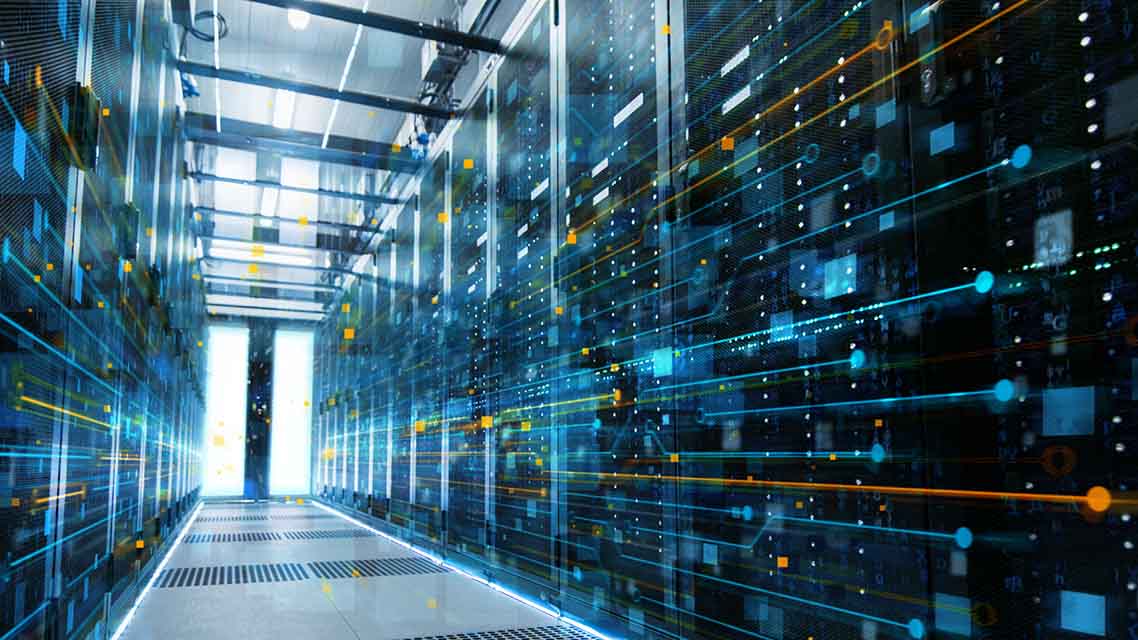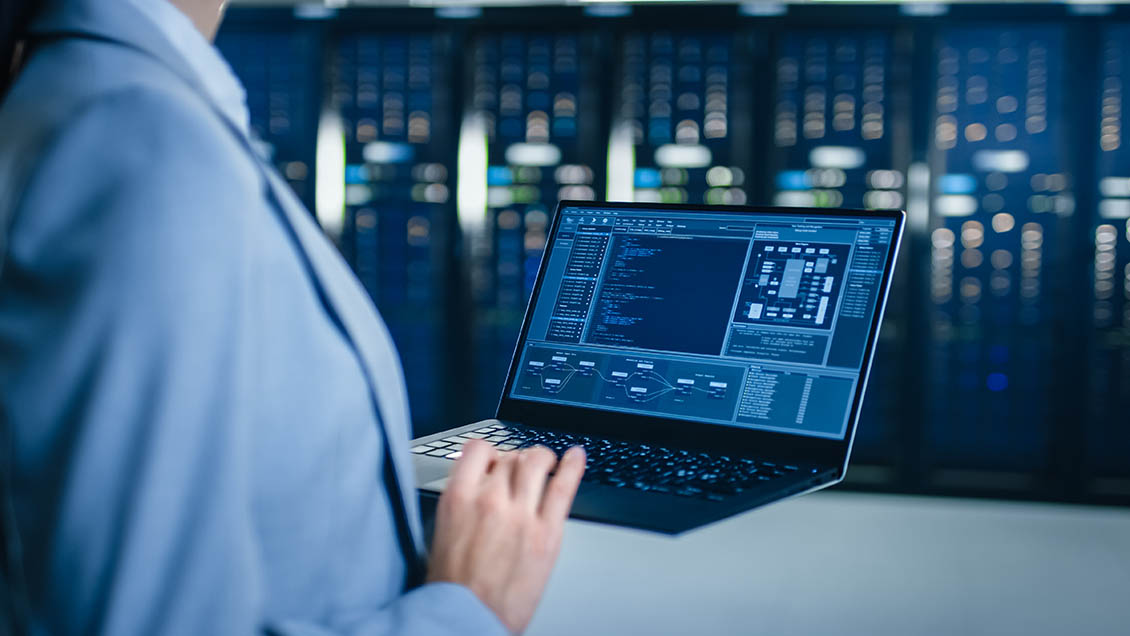
What is Network Infrastructure?
In a nutshell, network infrastructure is the collection of hardware and software that constitutes a particular network. These various components work together in a physical or virtual network to provide users with the capability to accomplish tasks through the various applications and services that run on that network.
If you find this network infrastructure definition too shallow, don’t fret. This post digs deeper and takes a closer look at the differences between network infrastructure and IT infrastructure, the typical components of network infrastructure, how it handles security, and the main challenges surrounding this kind of infrastructure.
Network Infrastructure and IT Infrastructure Differences
The terms “network infrastructure” and “IT infrastructure” are often used interchangeably. Technically speaking, however, there’s a subtle difference. IT infrastructure includes hardware, software, and the facilities (e.g., a datacenter) that house them. If you review our infrastructure network definition in the introduction, you’ll notice that it doesn’t include facilities.
Some definitions of IT infrastructure even include the IT team managing the IT infrastructure as well as the end-user endpoint devices such as desktops, laptops, thin clients, tablets, and phones. So, it’s safe to say network infrastructure is a subset of IT infrastructure.
Typical Network Infrastructure Components
A typical network infrastructure consists of several components. Below, you’ll find some of them grouped into networking hardware, software, and services.
Networking Hardware
Networking hardware consists of the physical devices and cables that comprise an organization’s network.
Servers
Servers are computers that hold operating systems (OSs) and software applications intended for multiple users or other applications. For example, Windows servers run on Windows Server OS, which is different from the Windows OS that runs on PCs and laptops. Servers are usually more powerful than desktop computers or laptops. Usually, they require higher specifications of CPU, RAM, and storage resources. You can think of servers as the “brains” of a network infrastructure.
Network Cables
If servers are the “brains” of a network infrastructure, network cables are the “veins and arteries”. Network cables are the media over which data are transmitted to and from servers as well as to and from the other devices on the network. In wireless networks (e.g., Wi-Fi networks), network cables are replaced by electromagnetic waves.
Switches
Switches are network infrastructure devices that direct data to their intended recipients. Basically, network cables (or electromagnetic waves, in the case of wireless networks) carry data. However, they have no way of knowing where to send them. Thus, in a typical network, cables are connected to a switch. The switch receives the data from one cable and forwards it to the cable that leads to that data’s intended destination.
Routers
Like switches, routers also direct data to their intended recipients. However, they’re usually designed to send data from one network to another. Let’s say you have two networks—LAN1 and LAN2. Each of these networks would likely have a switch to facilitate data exchanges between the various devices on one network. However, if a device on LAN1 needs to send data to a device in LAN2, you would now need a router for that purpose.
Firewalls
Firewalls are the most basic security devices in network infrastructures. They’re designed to inspect network packets (these are formatted units of data) and determine if a particular packet should be blocked or allowed entry into the network behind that firewall. Usually, the rules that govern which packets are blocked/allowed are specified by your network administrator.
Software
Networking software consists of all software for running the network, its applications, and the OSs and applications of the users.
Operating Systems
Operating systems are complex pieces of software that support and manage software applications. Generally speaking, before you can use an application, you would have to install that application on a compatible operating system. Examples of operating systems are Windows, Linux, and macOS.
Applications
Applications are the pieces of software that users interact and accomplish tasks with. Popular examples of software applications include Microsoft Word, Excel, and PowerPoint. Less popular, but equally important applications include web server applications, file-transfer server applications, and mail server applications.
Network Protocol Services
Strictly speaking, network protocols are neither hardware nor software, but services. However, they still play a vital role in network infrastructure. Network protocols are sets of rules that applications and network devices adhere to in order to communicate with one another. Examples of network protocols include Hypertext Transfer Protocol (HTTP), File Transfer Protocol (FTP), Secure File Transfer Protocol (SFTP), Simple Mail Transfer Protocol (SMTP), Transmission Control Protocol (TCP), User Datagram Protocol (UDP), Internet Protocol (IP), etc.
Network Infrastructure Definition—Looking into Security
If you recall, firewalls are the most basic security devices for network infrastructures. Yes, that means there are more. Network security is vital to every network infrastructure, as you will likely be collecting, generating, processing, and exchanging a lot of sensitive data in your networks.
The value of all that data can attract malicious individuals. Cybercriminals can make a healthy profit if they get their hands on your data. Large volumes of personal data, for example, can be sold to other cybercrime outfits (e.g., identity thieves) in marketplaces on the dark web. Trade secrets, on the other hand, can be sold to your competitors. You need to secure your network infrastructure to fend off these threats.
Network security is also essential for regulatory compliance. Data protection/privacy laws and regulations such as the Health Insurance Portability and Accountability Act (HIPAA), the Payment Card Industry Data Security Standards (PCI DSS), and the EU Data Protection Law, for example, have stringent security requirements for network infrastructure.
Firewalls alone can’t withstand the onslaught of a determined threat actor nor are they sufficient to make you achieve regulatory compliance. You’ll need other network security tools to augment firewalls. Other network security tools include:
- Intrusion detection systems / intrusion prevention systems (IDS/IPS).
- Virtual private network (VPN) solutions.
- Anti-malware solutions.
- Endpoint Detection and Response (EDR) solutions.
- Reverse proxies.
- You can also use encrypted protocols like Hypertext Transfer Protocol Secure (HTTPS), File Transfer Protocol Secure (FTPS), and Secure File Transfer Protocol (SFTP) to prevent threat actors from intercepting network traffic, especially those that traverse insecure networks like the internet and stealing confidential information from there.
Network Infrastructure Challenges
Security isn’t the only challenge you’ll face when managing your own network infrastructure. Other challenges are explained below.
Remote and Hybrid Work Environment Support
Increased demand for remote and hybrid work environments is forcing key decision makers and IT administrators to upgrade their network infrastructure so that it’s capable of supporting these types of environments. Unfortunately, traditional networks, which were built originally to support onsite workers, don’t have that capability.
High Total Cost of Ownership (TCO)
If you’re still starting to build your own network infrastructure, the first challenge you’ll encounter is cost. Servers, network devices, and even software licenses are expensive. It’s not only that. The cost of running all these components can also be expensive, as you’ll need to spend on IT staff, maintenance, hardware and software upgrades, electricity, cooling, and so on.
Staffing Issues
You’ll need to manage and maintain the various components of your network infrastructure as well as the infrastructure as a whole. This kind of undertaking is going to require trained and, as much as possible, experienced IT staff. The problem is there’s a talent shortage in the IT field. Many companies are competing for good talent from a very limited talent pool.
Hybrid Cloud Initiative Support
Cloud adoption is in full swing. But not everyone is willing to go all-in on cloud. Most businesses prefer a hybrid cloud approach wherein they migrate some workloads to the cloud but still keep some of their workloads on their on-premises network infrastructure.
In choosing an IT solution, it’s important to take into consideration these challenges. You must always ask yourself—will this product or service worsen or minimize the challenges outlined above? One particular product that can help you meet these network infrastructure challenges with one solution is Parallels® RAS.
How Parallels RAS Helps You Meet Network Infrastructure Challenges
Parallels RAS is an all-in-one virtual desktop infrastructure (VDI) solution that enables you to host virtual applications and desktops on physical or virtual servers and then have them accessed remotely by users from any endpoint device. It’s a cost-effective way to enable remote or hybrid work environments, address staffing issues, and support hybrid cloud initiatives.
Enables Remote and Hybrid Work Environments
By using Parallels RAS, remote and hybrid workers can access the applications and desktops they need from any device—be it a company-issued laptop or a personally owned PC. In a pinch, they can even use a phone or tablet. Users don’t need to install the applications they need. To access their applications and desktops, users can simply login to the Parallels RAS server, load up the applications they need, and start working—anytime, anywhere, on any device.
Parallels RAS can be deployed on your on-premises network infrastructure, so it’s all you’ll need (plus an internet connection of course) to support remote and hybrid work environments.
Reduces Total Cost of Ownership
Virtual applications and desktops delivered via Parallels RAS have significantly lower system requirements than traditional, locally installed applications and desktops. That means you can use more affordable endpoint devices such as thin clients, Chromebooks, or even repurposed PCs. This also means you can extend your hardware refresh cycles, thereby reducing the need to purchase new hardware.
Resolves Staffing Issues
Centrally managed and easy to administer, Parallels RAS simplifies and streamlines endpoint device management. Instead of deploying, configuring, maintaining, and updating applications for every single device, you can do all that from one central administrative console. This can reduce your IT staffing requirements substantially.
Supports Hybrid Cloud Initiatives
Parallels RAS readily supports several deployment options, including on-premises, public cloud, hyperconverged infrastructure, and even hybrid cloud deployments. This means you can leverage the power of VDI while utilizing both your public cloud infrastructure (if you have one) and your existing on-premises network infrastructure at the same time.
Would you like to experience the benefits of Parallels RAS firsthand?

